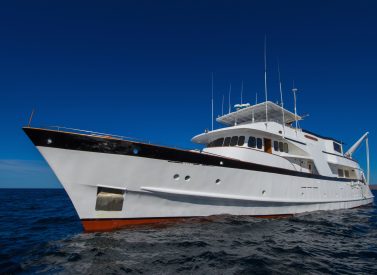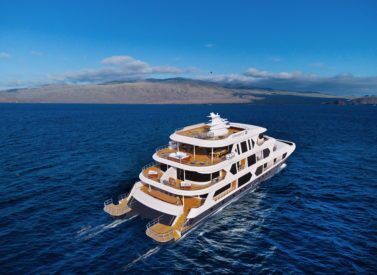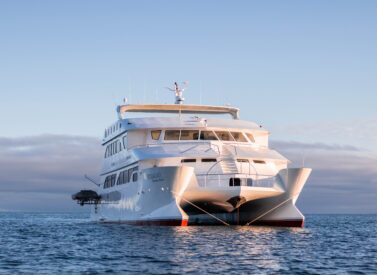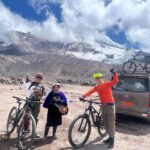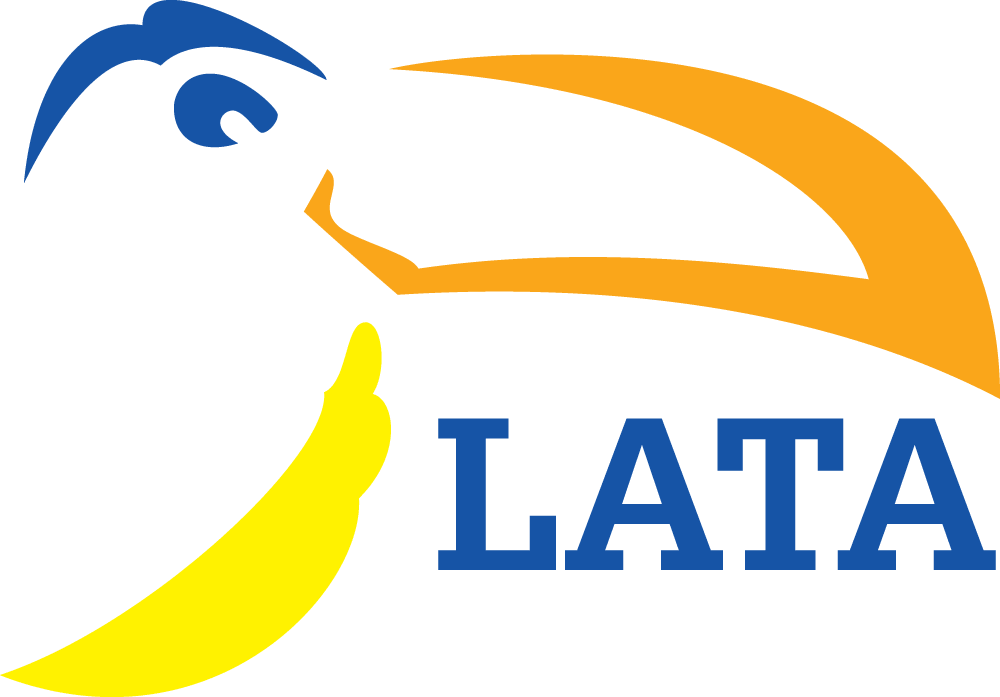
Galaxy, Galapagos Islands Cruise Boat
Cruise the Galapagos on first class Galaxy
The Galaxy is a new Galapagos cruise boat, designed with all the modern conveniences the archipelago demands.
Itineraries lasting 4,5 or 8 days give optimum choice and flexibility while visiting the best visitor sites in the islands.
Each cruise focuses on different islands so you can pick the right trip for you – wildlife, snorkelling, volcanoes or all three. Read our own expert review of life aboard the Galaxy.
More on Galaxy Galapagos cruise
There are nine beautiful and comfortable double cabins and ocean views – with a choice of twin or double beds.
All also feature private bathrooms, cold-hot water showers, air-conditioners, safety box and a hairdryer.
These well-appointed cabins are complimented by large communal areas. Watch the Galapagos and its wildlife float past while relaxing on the sundeck or with a cocktail in the bar.
Galaxy also offers a spacious dining room and lounge.
Trip Highlights
Print Share Download as PDF-
Galaxy sails with 16 passengers but has room for 18, making it very spacious.
-
All cabins have private bathrooms, cold/hot water; air conditioned, hair dryer, telephone for internal communication on board, safe box, and high speaker.
-
Variety of itineraries: 4,5 or 8 days, 4 routes, making the Galaxy flexible to meet your needs.
-
Kayaks and paddle boards available for those who want to gaze at the wildlife from above.
-
Three meals served daily, after-excursion snacks and non-alcoholic beverages. Barman serving cocktails!
-
Modern ship with all the comforts added in.
I would really like to thank you & Andean Trails for just superb arrangements.
The Galaxy was just superb. The yacht was very comfortable. Our en suite cabins just great. And food superb. Please make special mention of the crew. They were so courteous, helpful and friendly. The cabin attendant....I don't know how he managed to do up our cabins ...literally before you could blink. And the snacks after each outing....And the dinners...I couldn't even muster up that on land in a full fledged kitchen.
The crew of the Galaxy were very very special. I did thank the Capt for a week of safe sailing. If I had to do it again, I wouldn't even consider an alternative.
J. Bangara, Galaxy
Full Itinerary
Itinerary A
Itinerary A (4 days) Sun- Wed
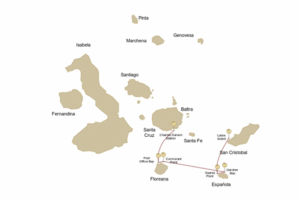
Day 1: Fly mainland to San Cristobal – transfer to yacht - Lobos Island (L, D)
Reception at San Cristobal at airport, transfer to yacht, welcome on board Galaxy Cruise. Welcome drink and lunch.
In the afternoon, you take a trip to Lobos Island, a peaceful little island separated from San Cristobal by a narrow channel. This quiet spot is full of life — especially sea lions, or “lobos marinos.” When you arrive, playful sea lion pups often greet visitors along the shore, while male frigatebirds show off their bright red chests in the trees. Keep an eye out for blue-footed boobies nesting along the paths — you might even see their funny courtship dance.
Snorkel in calm, clear waters where you can swim alongside curious sea lions performing underwater flips and spins. You might also spot sea turtles and rays resting on the sandy bottom, showing how peaceful and diverse life is under the surface.
Yacht for dinner and briefing.
Day 2: Española : Punta Suarez - Gardner Bay (B,L,D)
You have breakfast early in the morning, then set off for Suarez point -dry landing and walk. Sea lions and marine iguanas welcome you and as you explore further, witness a mosaic of seabird colonies, from blue-footed and Nazca boobies to graceful frigatebirds and tropicbirds.
Between April and December, Española is also home to the Waved Albatross which, with a weight of three to four kilograms and a wingspan of more than two metres, is one of the largest birds of the islands. Around twelve thousand pairs have their nests on Española Island and the species is considered endemic to here.
In the afternoon, visit Gardner Bay, an expansive white sand beach and one of the longest in Galapagos at 2 km.
Wet landing, followed by a short walk, swimming, snorkelling and observation of a sea lion colony. On Gardner Bay, you’ll find sea lions relaxing on the beach, enjoying the sun. Snorkel with them, as well as sea turtles, tropical fish and maybe even marine iguanas.
Return to the yacht for a briefing and dinner.
Day 3: Floreana: Cormorant Point - Post Office Bay (B,L,D)
Your first visit today is Cormorant point – wet landing, snorkelling and short trek.
Cormorant Point, on the north of Floreana Island, is a dream destination for nature lovers. Its coastal lagoon is home to flamingos, white-cheeked pintails, and black-necked stilts, while the soft white sand beach is an important nesting site for green sea turtles. Recently, blue-footed boobies have also begun nesting along the walking trail. The area is rich with unique native plants.
Snorkel at Devil’s Crown, a stunning underwater site formed by an old, eroded volcano. The strong currents bring in a variety of marine life — including reef sharks, rays, sea turtles, and large schools of colourful fish like snappers, parrotfish, and angelfish. It’s one of the best snorkelling spots in the Galapagos. NOTE: There is often a current at Devil’s Crown.
In the afternoon, we visit Post Office Bay. Short walk, swimming, snorkelling …. and visiting the quirky post box of course!
Step back to a time when sailors set up a wooden barrel to exchange mail — a tradition that still continues today. In the past, this bay was an important stop for whalers collecting freshwater and tortoises. Today, it offers a beautiful beach and plenty of wildlife, including sea lions, green sea turtles, reef sharks, and sometimes even the rare Galapagos penguin.
Return to the yacht for a briefing and dinner.
Day 4: Charles Darwin Station – transfer to airport – flight to mainland (B). Itinerary A ends.
Breakfast very early in the morning, allowing time for one last visit before you return home – the Charles Darwin Station.
Here you can find out more about the research programmes, as well as seeing the resident giant tortoises and land iguanas that are kept here in breeding programmes in an effort to preserve endangered species.
Transfer to Baltra airport and return flight to mainland Ecuador.
Galaxy Itineraries B and C
Itinerary B
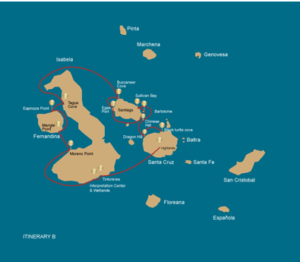
Day 1: Fly to Baltra – transfer to boat – Santa Cruz Highlands (L,D)
Arrive Baltra airport and your guide will be waiting for you. Transfer to Santa Cruz, we cross the Itabaca Channel then take our private bus to Puerto Ayora.
Once we arrive to Puerto Ayora, we head to the Galaxy, settling into our cabin accommodation and have lunch.
After lunch, our first visit is the Highlands where we find the giant tortoises in their natural habitat. For this visit we recommend wearing sport shoes, long trousers, raincoat, hut and sun block.
We head back to Puerto Ayora and the yacht, and at night we have a welcome cocktail and the formal presentation of our crew.
Briefing for next day. Dinner on board.
Day 2: Isabela: Tintoreras - Wetlands - Interpretation Centre (B,L,D)
Begin your morning on Isabela Island with an exciting adventure at Tintoreras, a group of small islands rich in wildlife. Cruise through the clear waters and uncover a lively underwater ecosystem filled with white-tipped sharks, vibrant tropical fish, and starfish.
Immerse yourself in the incredible marine life of Isabela as you swim alongside sea turtles, manta rays, and, with a bit of luck, Galapagos penguins.
In the afternoon, head into Isabela Island’s wetlands, an essential ecosystem for the Galapagos’ biodiversity. These trails guide you through mangroves, salt lagoons, and beaches where you can observe flamingos, blue-billed ducks, and other aquatic birds.
The last visit of the day is to the Interpretation Centre, where you’ll learn about the islands’ natural and human history, conservation efforts, and ongoing initiatives to protect this UNESCO World Heritage Site.
Dinner on board.
Day 3: Isabela: Moreno Point - Fernandina: Mangle Point (B,L,D)
After breakfast, you disembark at Moreno Point which is located near Elizabeth Bay on the west coast of Isabela Island. You’ll see abundant birds on the dinghy ride along the rocky shores and on the hike along the path through lava rock leading to tide pools and mangroves. In the tide pools, green sea turtles or white-tip sharks can be spotted.
After the panga ride, enjoy a snorkel and a chance to see sea turtles, cormorants and many species of fish. Look carefully in the long seaweed and you might find a sea horse.
In the afternoon, visit Mangle Point on pristine Fernandina Island, one of the most untouched islands in the Galapagos. This spot boasts a stunning mangrove ecosystem, which provides a sanctuary for wildlife. As your boat glides through the clear waters, take in the intricate mangrove roots where marine turtles and rays often seek refuge. The calm, shallow waters make it a perfect location for snorkelling, allowing you to swim alongside sea turtles, various ray species, and an abundance of tropical fish.
Dive into the serene waters of Mangle Point and enjoy close encounters with the rich marine life that thrives among the mangroves and coral reefs.
Day 4: Fernandina: Punta Espinoza - Isabela: Tagus Cove (B,L,D)
Espinoza Point on Fernandina is one of the highlights of a cruise in Galapagos. The dry landing is, depending on the tide, on lava or on the landing platform in the mangrove forest – and can also be a wet landing if the water is lively!
Fernandina is the youngest and most pristine of the Galapagos Islands, with no introduced animals. Recent lava flows formed from an active volcano stretch their way around the coast. We head off on a hike that showcases huge marine iguanas in big groups. Take care to stay on the pathway because the sand dunes are nesting areas for the marine iguanas.
Our snorkel here gives us out best chance to see marine iguanas feeding on seaweed.
Return to the Galaxy yacht for lunch.
In the afternoon, visit Tagus Cove, a protected cove on the western side of Isabela and a favourite anchorage site for the early pirates and whalers who, over the centuries, carved and painted their names in the high cliffs of the cove.
In the zodiac or kayak (if available), we can explore the coves here and look for Galapagos penguins, boobies, pelicans and other seabirds.
There is a hike here too, and it’s a dry landing, then heading uphill and the scenic hike to a salt-water lagoon, a scenic overlook with a spectacular view of the ocean, lava fields and volcanic formations. At the end of the trail there is a great view over the lava fields of the Darwin volcano.
If the water is clear, Tagus Cove is a very interesting snorkelling spot – look out for marine invertebrates on the walls, cormorants, penguins, sea turtles, and many species of fish.
Return to the yacht for dinner and briefing.
Day 5: Santiago: Buccaneer Cove- Egas Port (B,L,D)
Buccaneer Cove is steeped in history and natural beauty. It was a hideout for pirates and buccaneers in the 17th and 18th centuries and was where sailors hid their treasures and gathered fresh water and tortoises for long voyages. Today, this stunning landscape of cliffs and rock formations is home to diverse wildlife. There is no trail here but a dinghy ride allows you to explore the cove and see seabirds and other species which live on this legendary Galapagos site.
You’ll be able to snorkel in the sheltered waters of the cove, surrounded by vibrant marine life and swim among schools of angelfish, parrotfish, and snappers, as well as reef sharks, sea turtles, and sea lions.
Later visit Egas Port, a fascinating destination where history and wildlife intertwine. There is no actual port, but remnants of 1960s colonization attempts still stand. The coastal trail is strewn with marine iguanas basking in the sun and sea lions on the rocks. Herons, oystercatchers, and shorebirds complete this thriving ecosystem. Towards the end of the trail, there are grottos where a small colony of elusive Galapagos fur seal lives.
A snorkel from the beach will lead you to an area of rocky floor, excellent for observing fish, turtles, and reef sharks. Sea lions often frequent this area and are typically open to interacting with divers.
Return to the boat for briefing and dinner.
Day 6: Bartolome Island - Santiago Island: Sullivan Bay (B,L,D)
This morning we aim to hike to the top of Bartolomé, a once active volcano. The summit trail and steps lead us on a 30 minute climb. From the top of the wooden stairs, look out at the panoramic view of the island and Pinnacle Rock, an eroded tuff cone. Crystal clear water invites you to snorkel from the beach with f tropical fish and Galapagos Penguins, or take a zodiac ride to spot them.
Sullivan Bay is a young island and is inhospitable to most plants and animals – many visitors say walking here is like stepping into a different world. The hike will take you across a perfectly preserved Pahoehoe lava flow and along the way, you’ll see lava bombs, spatter cones and cinder cones. The landscape may appear barren at first, but a closer look reveals resilient pioneer plants, scurrying lava lizards, and small birds. Along the shore, penguins, pelicans, and oyster catchers add some life to the stark environment.
Return to the yacht for the evening briefing and dinner
Day 7: Chinese Hat - Dragon Hill (B,L,D)
Morning visit to Chinese Hat, so-called because of its hat shape, this is a small, attractive island separated from larger Santiago Island by a 200m channel. Its turquoise waters, coral-sand beaches, and volcanic rocks create a wonderful landscape. A trail leads through a sea lion colony, and you may spot penguins resting on the lava rocks .
You can snorkel in the crystal-clear waters of Chinese Hat and observe at the vibrant colours of the fish, spot reef sharks and, if you’re lucky, a penguin darting through the water.
After lunch, you visit Dragon Hill, located on the north coast of Santa Cruz Island, and the only place on the island where land iguanas roam freely. Near extinction in the 70s and 80s, the population has successfully rebounded. You’ll also spot a saltwater lagoon where flamingos, ducks, and shorebirds often gather.
After the walk, dive into calm, shallow waters for a snorkelling experience: swim among surgeonfish and parrotfish, and spot reef sharks and rays.
Dinner on board.
Day 8: Black Turtle Cove- transfer to Baltra- fly to mainland (B)
In the morning, we board a panga (dinghy) and head into Black Turtle Cove mangrove.
There are many coves and inlets to explore, and your guide will often turn off the motor so you drift along. Keep an eye out for pairs of mating sea turtles (Sept to Feb), white-tipped reef sharks and golden cow-nosed rays, as well as eagle rays, golden rays and young Galapagos sharks, plus a wealth of bird species, including herons, pelicans, and boobies.
This is our last visit and it’s time for our transfer to the airport and flight back to the mainland.
Itinerary C: (5 days) Wed- Sun
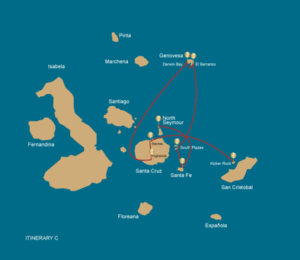
Day 1: Arrive Baltra- transfer to yacht - North Seymour Island (L ,D)
Arrive Baltra Island where your guide will be waiting for you. Transfer to the Galaxy yacht for lunch.
Afternoon visit to small, but wildlife–rich North Seymour, where a trail passes through bushy vegetation and colonies of blue-footed boobies, frigate birds, marine iguanas and sea lions on this island formed by a series of layers of sediment lifted up by tectonic activity.
Thanks to a very early breeding project in 1932 which saw land iguanas being introduced from Baltra to North Seymour we can still see some of these creatures here today.
Return to the boat for briefing and dinner.
Day 2: Santa Fe Island - South Plazas Island (B,L,D)
The day starts with a visit to Santa Fe Island, celebrated for its beautiful bay and crystal-clear turquoise waters, ideal for swimming and snorkelling. Santa Fe is home to a larger species of land iguanas, unique to the island, which can be spotted among the giant prickly pear cacti.
The calm waters surrounding the island provide an excellent opportunity to observe marine life such as sea turtles, rays, and vibrant fish. Additionally, visitors may encounter the Galapagos hawk and several species of finches unique to the islands.
In the afternoon, you head to South Plazas Island, a small yet lively part of the Galapagos, known for its remarkable plant life, including tall cacti and the eye-catching Sesuvium plant, which turns from green to vibrant red during the dry season.
The island is home to a large population of land iguanas, often seen basking under the cacti or roaming the area. The southern cliffs are a refuge for seabirds like swallow-tailed gulls and red-billed tropicbirds, while sea lions frequent the coast, offering great chances to watch their playful behaviour in the water.
Return to the boat for briefing and dinner.
Day 3: Genovesa – El Barranco – Darwin Bay (B,L,D)
Genovesa is considered to be one of the most spectacular islands in Galapagos for bird species, and is home to the red-footed booby.
It’s a dry landing here at Prince Philip Steps (El Barranco), a nesting site of the Red-footed Boobies and a great place to snorkel. You can choose to swim or snorkel from the beach with sea lions in these northern warmer waters or for those with experience, there may be the chance to snorkel in some deeper waters.
Prince Philip’s Steps themselves offer an easy trail that leads first through a small nesting colony of Masked Boobies and then crosses a low and dense forest of palo santo trees. It’s here that the Red-Footed Boobies have their nests.
On both sides of the trail there is a big Nazca Booby nesting colony. In an open lava field there are Storm Petrels in large numbers. If you are lucky, you might see the elusive Short-eared Owl.
After lunch aboard, it’s a wet landing on Darwin Bay, a coral sand beach where Swallow-tailed Gulls and Lava Gulls gather near the tide pools. A trail leads you through red mangrove and salt bush, then you enter a forest of Opuntia cactus where colonies of Great Frigate nest. The males of this species inflate their red-throated pouches to attract females as they fly overhead. A few Nazca Boobies nest on the ground, and the trail leads along small tide pools up to a cliff with a spectacular view over the caldera.
Darwin Bay offers incredible snorkelling spots, from deep waters along the cliffs to shallow areas near the beach.
Dinner on the yacht completes your day.
Day 4: Santa Cruz: Highlands - Bachas Beach (B,L,D)
Today begins with a visit to the highlands of Santa Cruz Island, where you experience a completely different side of the Galapagos ecosystem. This lush, green area stands in stark contrast to the coastal regions.
The highlands are home to a variety of bird species, giant tortoises roaming in their natural surroundings, and an abundance of plant life, including unique trees and ferns. As you walk along the scenic trails winding through this vibrant landscape, you have the chance to observe the giant tortoises up close. The highlands also offer sweeping views of the island, showcasing its varied terrain.
In the afternoon visit Bachas Beach, a key sea turtle nesting site from November to May. At low tide, remnants of WWII barges emerge from the white sand. Explore its saltwater lagoons, home to flamingos, herons, and aquatic birds.
Dinner on the yacht completes your day.
Day 5: San Cristobal: Kicker Rock - transfer to airport - fly back to mainland (B)
Your final visit is to Kicker Rock, a towering volcanic formation over 460 feet tall, which stands just a few miles off the coast of San Cristobal. Its steep cliffs serve as nesting grounds for boobies, while frigate birds breed on the northern slopes.
Although landing is not permitted, a circumnavigation offers breath-taking views of the rock and excellent birdwatching opportunities from the sundeck.
After your morning adventure, it’s time to say goodbye to the Galapagos Islands and return to mainland Ecuador.
Prices From $2,600 / £2,114 per person
What's Included?
Accommodation, programmed visits to the islands with a certified naturalist guide, on board accommodation, snorkel gear (mask, snorkel and flippers), kayak, all meals on board, transfers in the Islands between the airport and dock, all meals plus purified water, tea and coffee
What's Not Included?
International flights, round trip flights to the Galapagos Islands, Galapagos National Park fee, Galapagos TCT fee, soft and alcoholic and bottled drinks, personal items, souvenirs, tips, wetsuit hire, travel insurance, personal items, Ecuador services
Accommodation
Galaxy has 9 beautiful and comfortable double cabins for 16 passengers; 3 cabins are located on the upper deck, 3 on the main deck and 3 on the lower deck.
Each cabin has private facilities: private bathrooms, cold/hot water; air conditioned, hair dryer, telephone for internal communication on board, safe box, and high speaker.
Galaxy offers a spacious sun deck with a large area to enjoy Galapagos’ landscapes, dinner area, lounge, bar and small library.
The boat provides free snorkel gear (mask, tube and fins) and kayaks.
You will find a bottle of water in your cabin the first day; you can use it and carry on when you land. This bottle can be refilled with fresh water from the dispenser placed in the lounge.
- Lounge services: Featuring a variety of table games, videos and books for your enjoyment.
- Bar service: A variety of sodas, cocktails, and liquors; please ask the barman for the list of drinks available on board and the prices.
- SAFETY BOX On board: Safety box in each cabin for your valuable belongings.
Tour Staff
The crews are “Galapagueños”, guides, captains and crew members were born and raised in the Galapagos Islands.
They know the area well and are prepared to show you the islands only like a native can do it.
The Naturalist, English-speaking guides have studied and been trained at Charles Darwin Scientific Station, and have long years of experience guiding at the Galapagos Islands.
Meals
The boat uses as much locally sourced produce as possible, including fish, coffee, eggs, fruits and meat farmed in Galapagos, to reduce carbon footprints and make sure the best ingredients are used.
The chef prepares three main meals a day, with snacks and drinks available after activities.
All dietary requirements can be catered for, vegetarians, vegans, lactose intolerant and more.
Breakfast usually features a juice, tea and coffee, toast, jams, eggs and pastries.
Lunch will include soups, then a main meal of rices, pastas, fish, omelettes and many more options, and often a small pudding.
Dinner will again be a hearty affair, with a starter, main meal and pudding, with water, teas and coffees available.
There is a bar with beers and cocktails available at extra cost.
Activity Level
Walks
Every visit to each island involves an easy or moderate walk, which can last between 2 to 3 hours, and are not considered strenuous. On these walks you will be led by an expert naturalist guides in a small group along clearly marked trails. They will explain in great detail all the wonders of each of our carefully selected itineraries. Most days there are two guided walks on a specific island where you will be able to walk and hike on beaches, lava fields, alongside cliffs and around mangrove estuaries.
Snorkelling
Snorkelling in the Islands is the highlight of the Galapagos cruise for many of our guests. You have the opportunity to go snorkelling almost every day – snorkelling with marine iguanas and with playful sea-lions are some of the highlights, as well as with green sea turtles, penguins and an incredible variety of colourful reef fish. On the western islands the water is a little colder but teaming with life. There are beach snorkels for beginners and deeper waters.
Zodiac rides
Dinghies, or “Pangas” as they are known in Galapagos, are inflatable zodiacs that serve as the main transportation method from our Galapagos yachts to the visitor sites. At several times during your week-long Galapagos travel adventure, you will have the chance to enjoy dinghy (or panga) rides in shores, mangrove estuaries, coves and caves.
Practical Information
Is this the cruise for me?
Lots of different itineraries of varying lengths, meaning great flexibility.
Still a relatively new boat – modern and comfortable.
Introduction to Galapagos
These magical islands comprise of 50 volcanic islands of varying shapes and sizes, which lie 1,000 kilometres off the coast of Ecuador.
Here, unlike anywhere else on Earth, you can enjoy a thousand close encounters with a weird and wonderful variety of ‘friendly locals’, including giant tortoises, fur seals, sea iguanas, frigate birds and blue-footed boobies.
Read our Galapagos Islands Guide and more about diving.
In 1535, Tomás de Berlanga, Bishop of Panama, floated into this archipelago and named it Galapagos after the giant tortoises he encountered. Pirates used the islands for refuge and to bury their stolen treasure after that.
The islands’ most celebrated visitor was Charles Darwin, who arrived aboard the HMS Beagle in 1835. The rare life forms he encountered helped him formulate his theory of evolution, which he published in The Origin of Species by Means of Natural Selection.
It wasn’t until 1959 when it became part of Ecuador’s national park system that this fragile ecosystem with its rare and endemic species came under protection.
In 1979 the Galapagos archipelago was declared a UNESCO World Heritage Site.
Weather in Galapagos
When to visit Galapagos Islands: weather and wildlife
There is no real ‘best’ time to visit Galapagos on holiday as there is always wonderful wildlife and weather to enjoy. Read our blog for more.
Most animals – tortoises, sharks, sea lions and boobies – are found year round and many of the species here are non-migratory.
The Galapagos Islands are located right on the equator so air and water temperatures do not vary by much.
Having said that, there are two recognised seasons, and each months brings natural marvels for the visitor to enjoy.
Below is our quick guide to the weather and wildlife you can find on the Galapagos Islands.
General weather information
The warm season (Jan-Jun)
- Calm, clear warm waters, great for snorkelling, often without a wetsuit.
- Great weather, with February and March being the hottest and sunniest months with blue skies and sunshine.
- Occasional heavy bursts of rain in the afternoons.
Sea temperatures: 22-25°C / 72-77°F
Land temperatures: 21-32°C / 72-90°F
The dry ‘garua’ season (Jun-Dec)
- It’s a great time for marine life in the cooler seas. Snorkellers may want a wetsuit.
- August and September the coolest when you may need a jacket in the evenings and the sea can be choppy.
- There can be mist on the islands in the mornings (garua) which usually burns off by midday leaving overcast skies or a sunny afternoon.
Sea temperatures: 15-22°C / 60-72°F
Land temperatures: 18-24°C / 65-75°F

Air and sea temperatures in Galapagos, month-by-month
Galapagos cruise kit list
Good kit is vital for every trip.
Book with Andean Trails and get 15% off Páramo’s fantastic ethical and high performance outdoor gear.
Galapagos – general advice
Galapagos is warm and humid, and you will need t-shirts (moisture wick-away or breathable t-shirts can be very useful, it can get very hot in the day), shorts, lightweight skirt or trousers and bathing suits.
One or two cotton shirts can be used to protect you from sunburn, especially when snorkelling (not very elegant worn in the water over a swimsuit, but practical – and Galapagos is NOT an elegant place!).
You may want to change into different clothes for the evening, but don’t take anything dressy or smart – there really is a very relaxed atmosphere on board.
Pack something warm for going on deck in the early morning or evening a fleece, maybe, and a sweatshirt – and a waterproof for the Highlands.
Strong sandals, trainers, or light hiking boots are ideal footwear – you may like to have something suitable for easy walks and another for tougher terrain – your guide will advise you daily what the walking will be like. Most boats ask passengers not to wear heavy shoes on board.
Do take a hat!
Seasickness tablets if you think you will have problems – i.e. Sturgeon, or Mareol if you buy them in Quito. The sea can be choppy, so it is recommended to take them as a precaution.
Galapagos – detailed kit list
- First aid kit – aspirin, imodium, sun tan lotion (facter 50 recommended), sunburn cream, lip salve, throat lozenges, insect repellent, etc.
- Earplugs – the engine can be noisy, whatever the boat, wherever your cabin.
- Sun glasses and sun hat.
- Snorkelling equipment – the boat either provides kit for free or has a supply for hire, but it may suit you better to take equipment in your size that you know will fit you. Even if you have not snorkelled before, DO have a go – under water Galapagos is a very special experience. Try it first of all from the beach, to get the hang of breathing through gritted teeth, then take the plunge!
- Towel, for the beach (most boats provide these, please ask).
- Money belt.
- Passport, with at least 6 months remaining from date of return from Ecuador.
- US Dollars cash and mixed denomination notes, undamaged and unmarked.
- Visa/MasterCard, Cash card.
- Personal & Medical insurance.
- Camera and film / memory cards (take at least twice the amount you think you will need!). You may want to take an underwater camera for snorkelling.
- Camera charger
- Binoculars
- Small backpack – to keep your sun cream, water, shirt etc in when you are on shore.
- Small plastic water bottle, 1-2 litres, depending on how much you drink.
- Biodegradable sunblock (v. high factor, 50+ recommended) and lip salve.
- Toiletries (featuring biodegradable soap).
- Wet Wipes/antiseptic hand wash cream
- Travel alarm clock.
- Sewing kit.
- Spanish/English phrasebook.
- Book, e-book, mp3 player/ipod or other for free time.
The Galapagos Islands are a very fragile environment and the arrival of more and more inhabitants to the islands, as well as tourist have an impact.
Please try to minimise your impact by:
- Bringing a water bottle to refill, rather than using a new bottle each time.
- Recycling your rubbish where possible, not leaving any rubbish behind.
- Taking batteries back home with you – they cannot be recycled properly in Ecuador.
- Saving water where possible.
- Leave toiletries that contain microbeads at home
- Saving energy by switching your lights off when you leave the room. Electricity on the islands comes from a generator, fuelled by petrol. For this same reason, please think about whether you really need to use your air conditioning.
Quito
Pleasantly warm during the day, but can be quite chilly during the morning or at night when you might want a jacket or a fleece, plus a waterproof.
You may want to dress up a little more in the evening here, depending on where you are staying, and what sort of restaurant you like.
Guayaquil
Conditions here are similar to Galapagos – hot and humid. T-shirts and shorts in the day, and like Quito, something smarter for eating out in restaurants at night.
Responsible Travel - our ethos
Andean Trails believes in Responsible Travel and actively supports several community projects.
Please see Our Advice and Our Ethos for more, and learn about the Projects We Support.
We operate the Inca Trail, our treks and tours with local firms.
We make sure that on our tours and Inca Trail we employ local staff, who are paid fair wages.
With the Inca Trail, We provide free life insurance to all of our porters. Tented accommodation and meals are provided for all trekking staff as well as foam mats, sleeping bags and rain ponchos. We have also provided the staff with trekking shoes. We ensure our porters carry a maximum of only 20kg. We offer them backpacks and they generally use back supports.
Clean burning fuel is used to cook the meals on the Inca Trail and porters carry gas stoves and butane bottles. We use biodegradable detergents when washing the cooking and eating utensils. If any part of our tour or trek is operated by another company, we try to ensure that high standards are maintained.
Our additional support helps the Huchuy Yachaq project which supports children and families in one of the poorest communities in the district of Cusco.
Prices From $2,600 / £2,114 per person
2026 price, per person
4 days (Itinerary A, Sun-Wed) USD2,600 per person in a shared cabin
5 days (Itinerary C, Wed-Sun ) USD3,500 per person in a shared cabin
8 days (Itinerary B or Itinerary C&A, Wed-Wed) USD6,100 per person in a shared cabin
Single supplement 50% - ask about cabin shares
These itineraries commence April 1, 2026.

Dates & Prices
Prices From $2,600 / £2,114 per person
2026 price, per person
4 days (Itinerary A, Sun-Wed) USD2,600 per person in a shared cabin
5 days (Itinerary C, Wed-Sun ) USD3,500 per person in a shared cabin
8 days (Itinerary B or Itinerary C&A, Wed-Wed) USD6,100 per person in a shared cabin
Single supplement 50% - ask about cabin shares
These itineraries commence April 1, 2026.
Can’t find what you’re looking for? Get in Touch
+44 (0)131 378 5593
+44 (0)131 554 6025



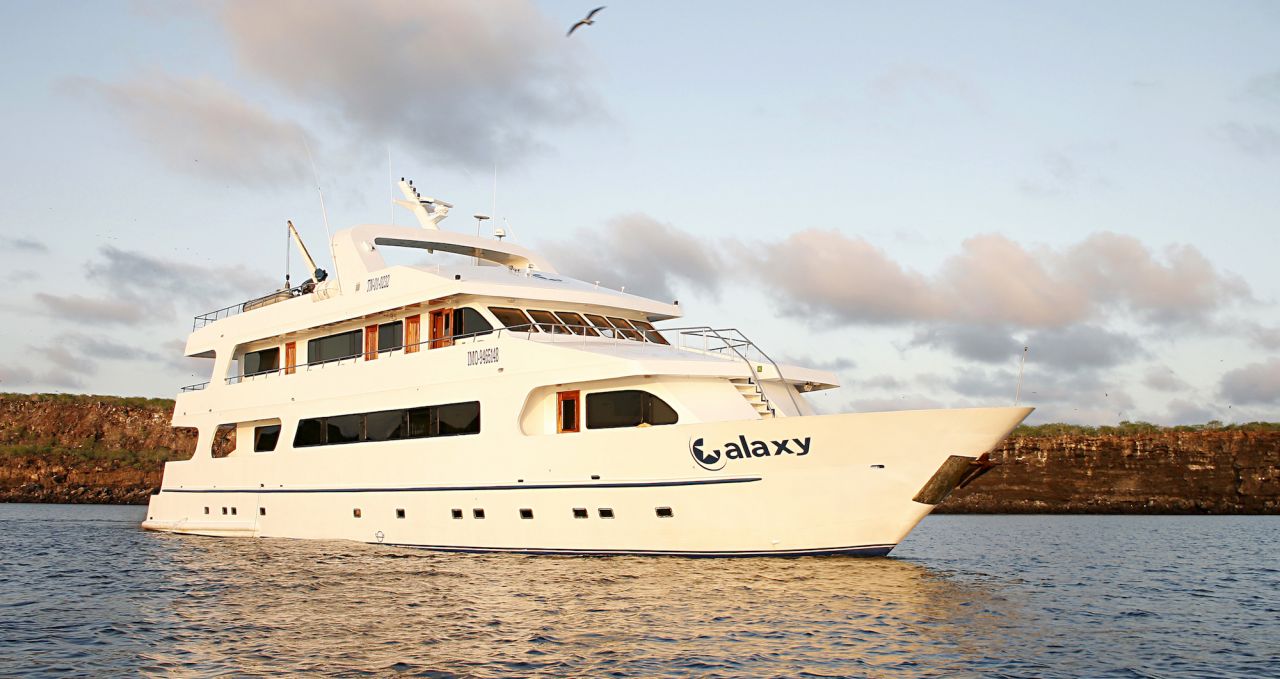
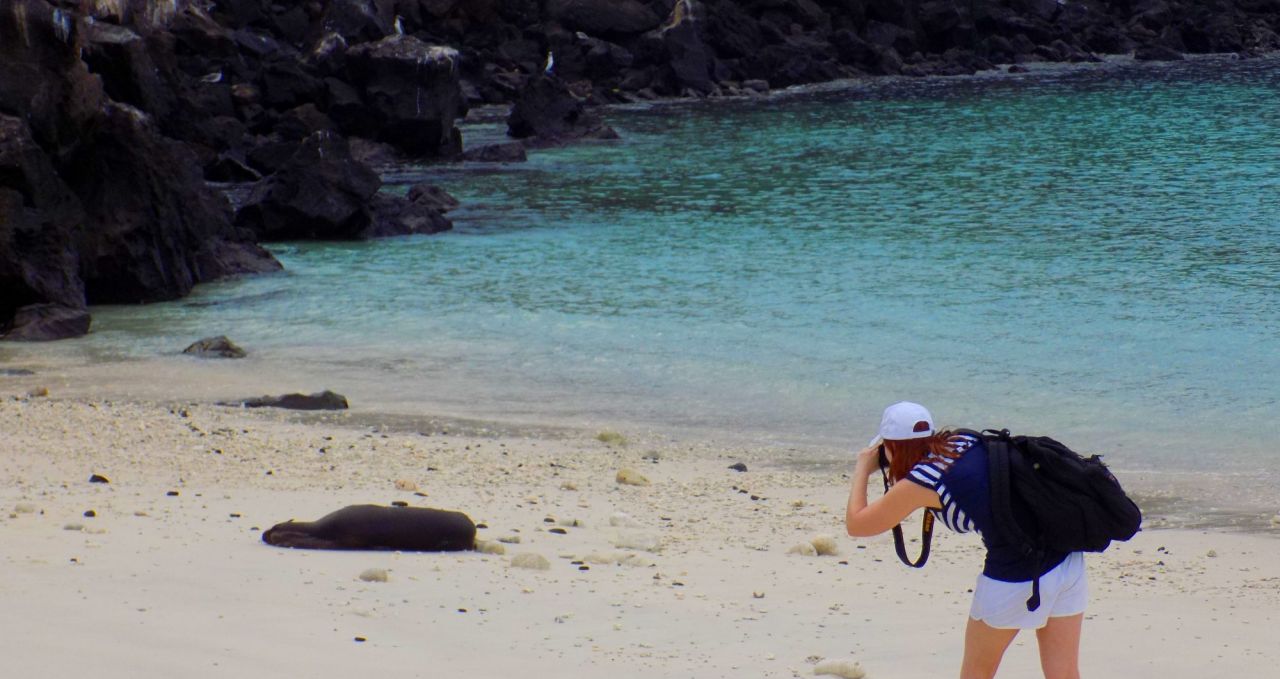
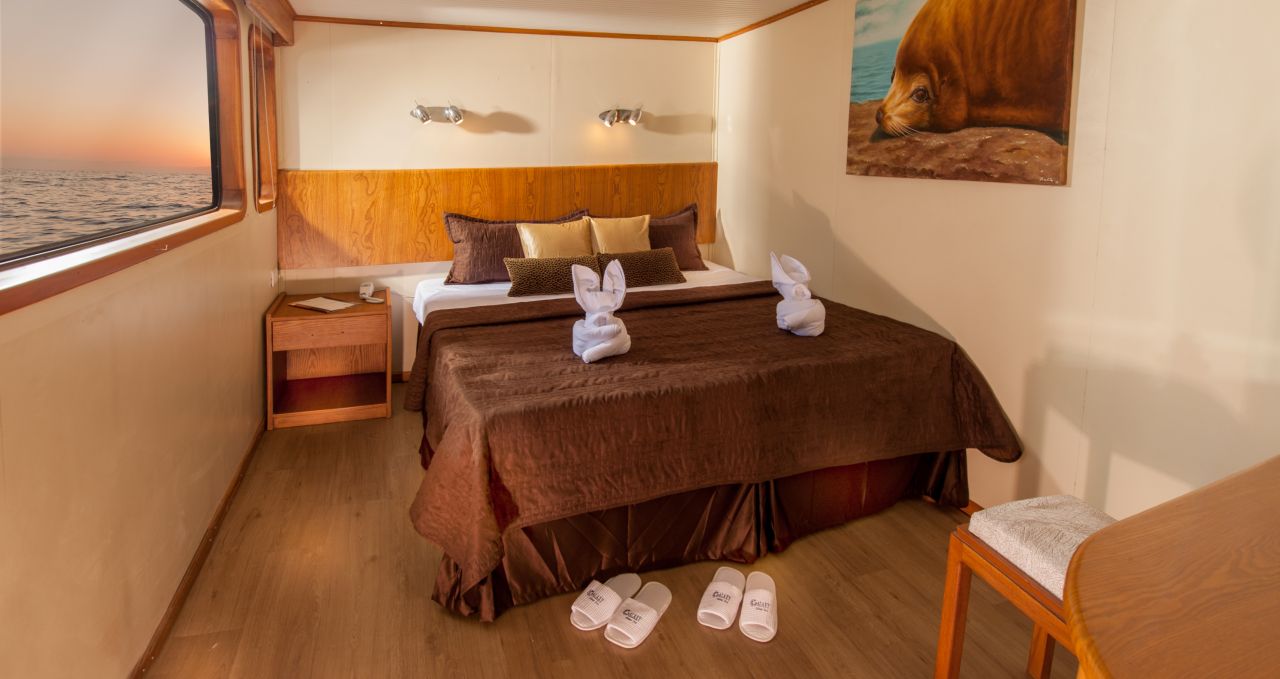
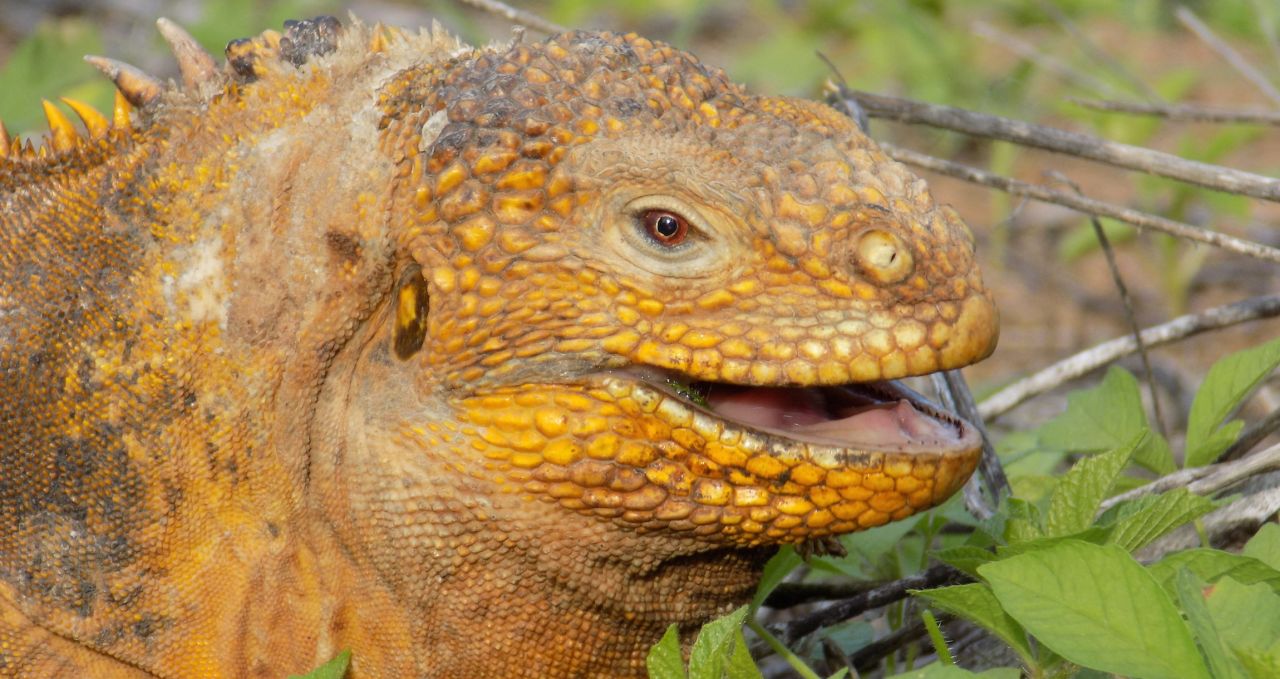
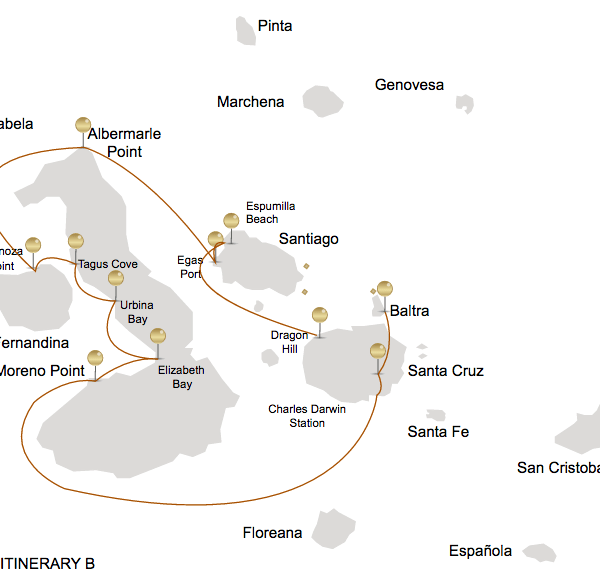
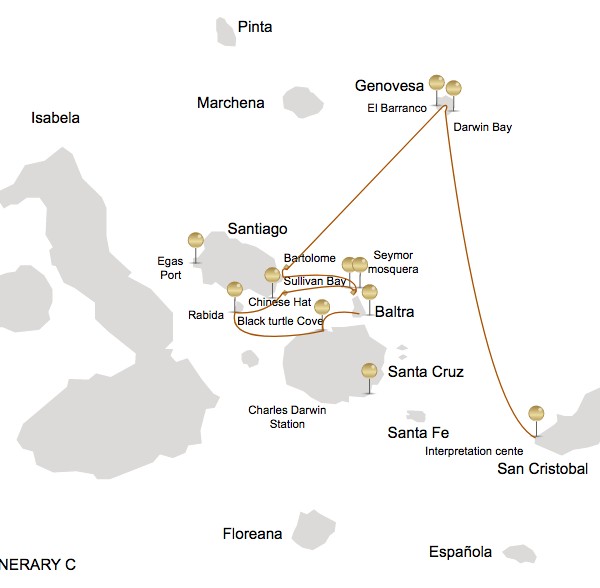
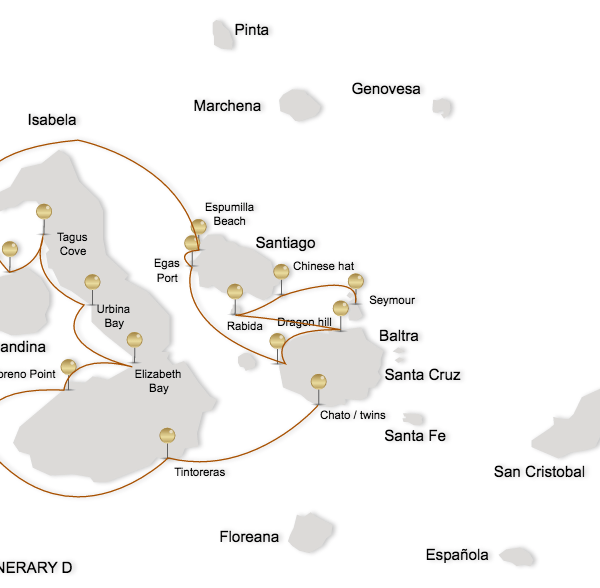
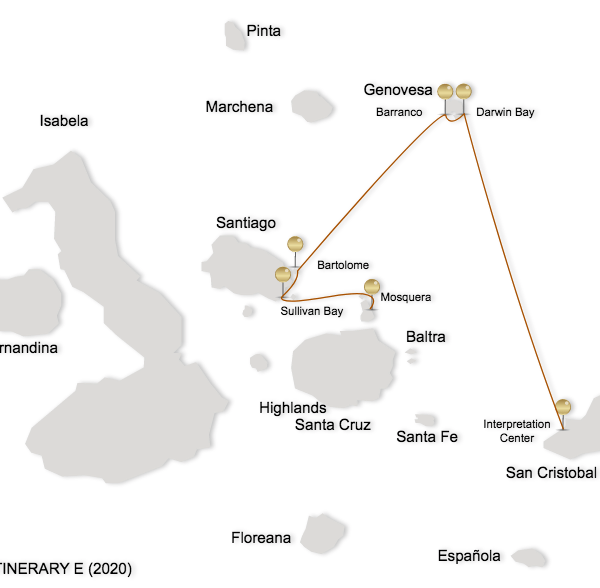
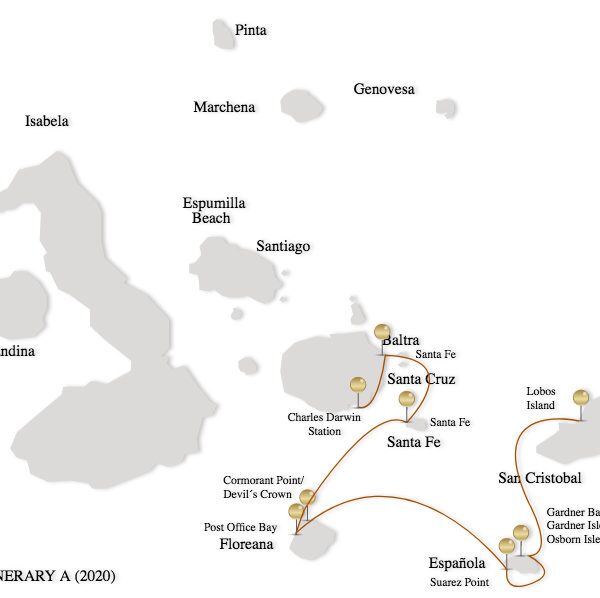
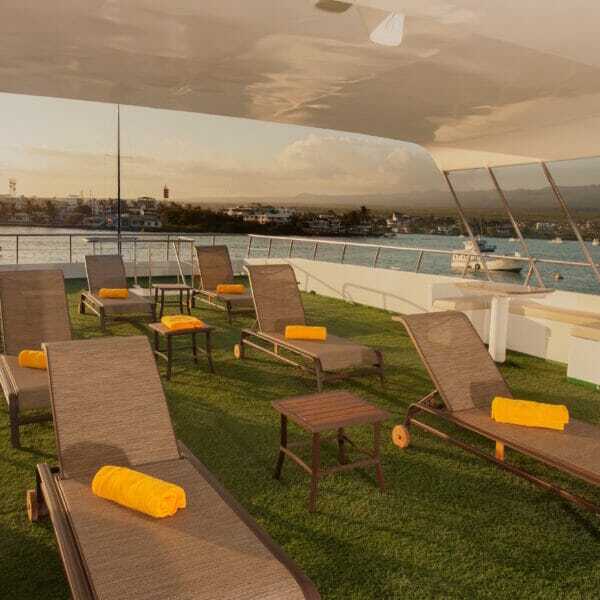
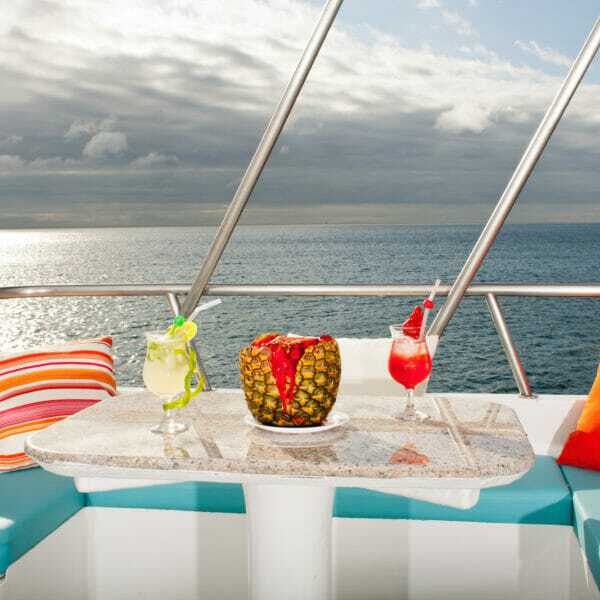
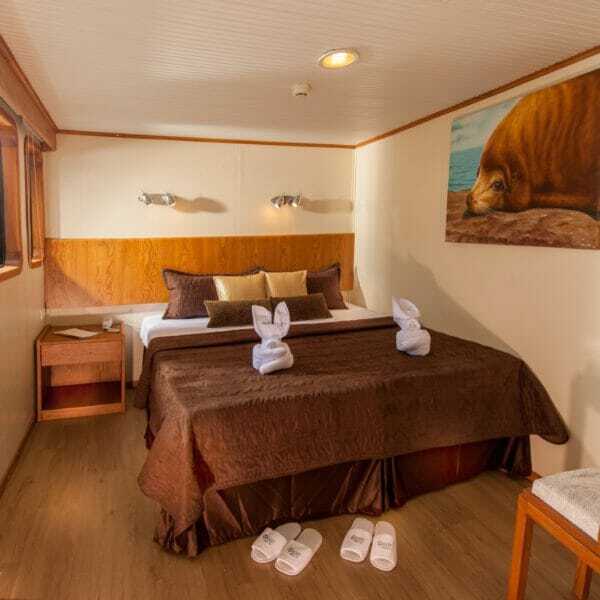
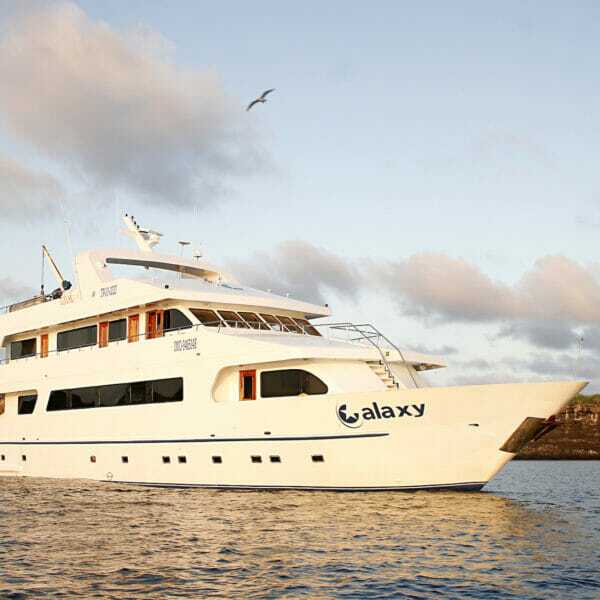
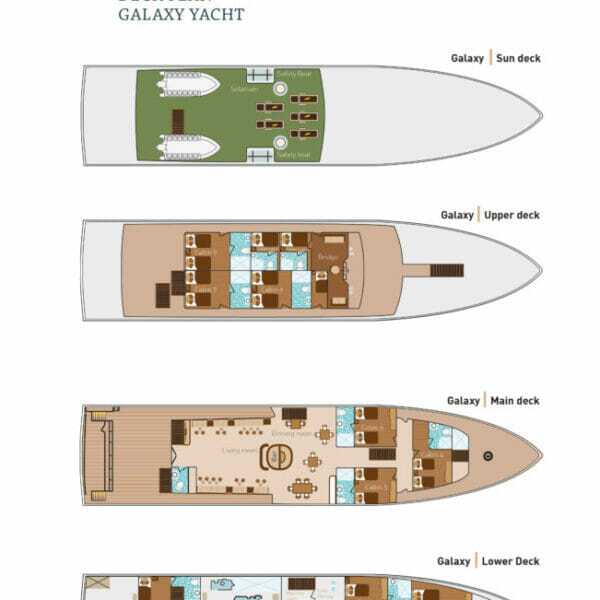
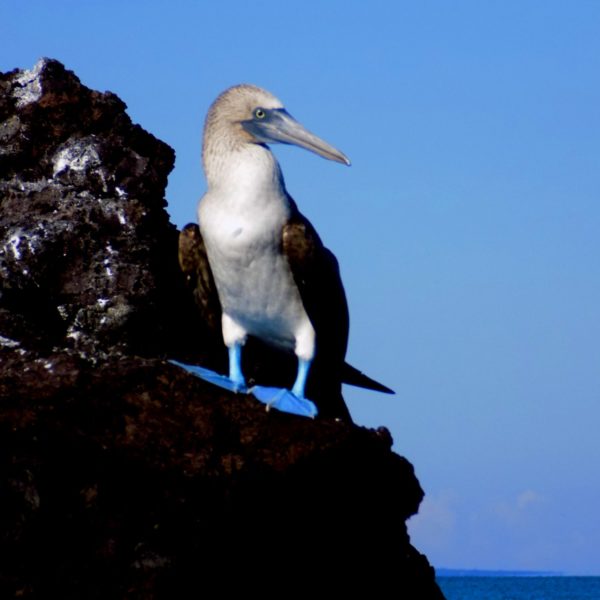
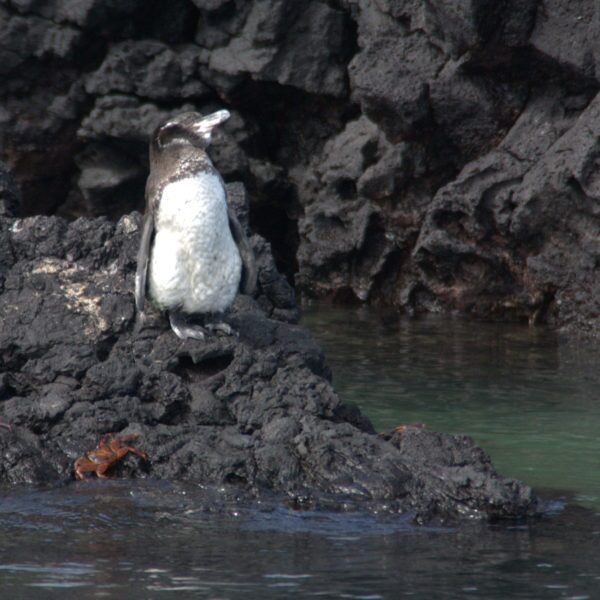
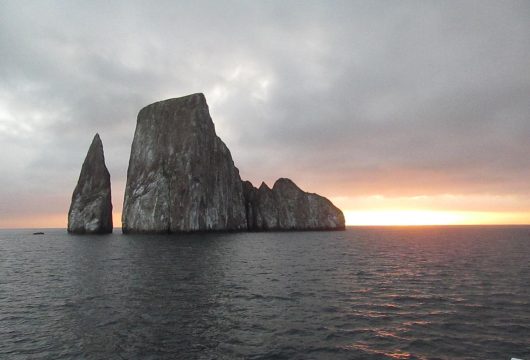

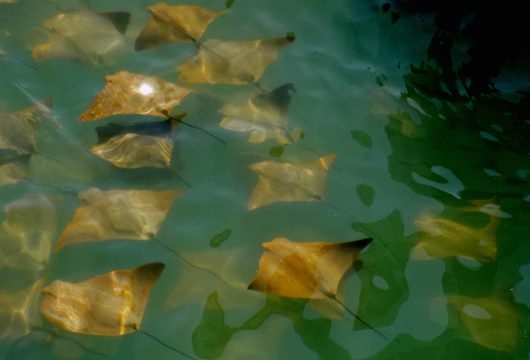
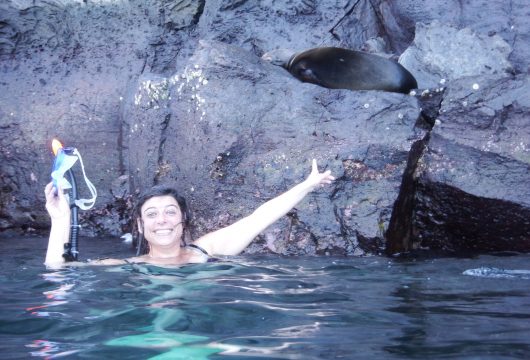
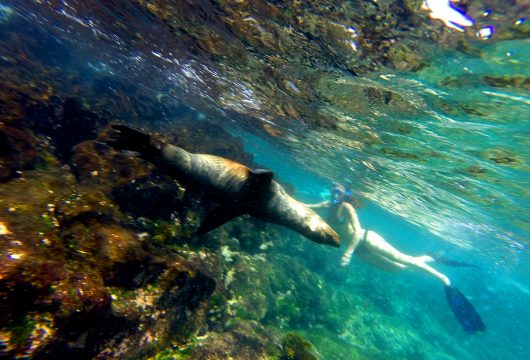
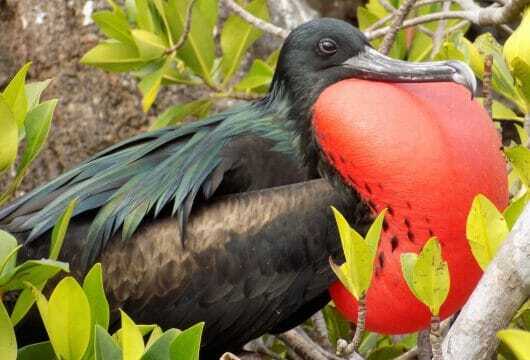
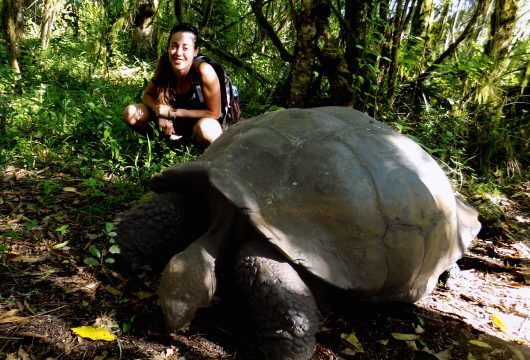
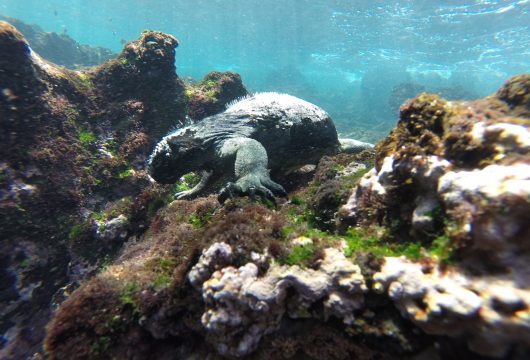
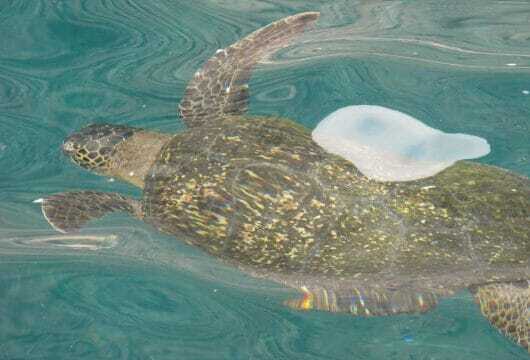
 a Group Tour
a Group Tour 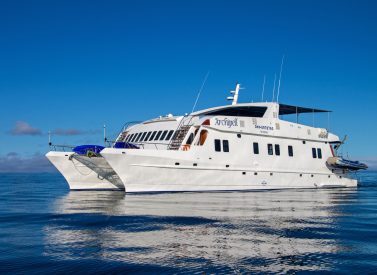
 a Tailor Made Tour
a Tailor Made Tour 